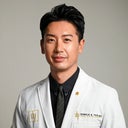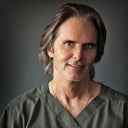It seems like many people are seeking revisions (sometimes more than one) after a Rhinoplasty? Is this based on the skill of the doctor. I had my nose done over 20 years and was never satisfied. I am planning on getting a non-surgical procedure. Doctors have said that this would be a good alternative for my case. This is still happening 20 years later. Some people have gone to top notch docs and still have gotten poor results.
Answers (6)
From board-certified doctors and trusted medical professionals
Dr. Donald B. Yoo, MD, FACS

Dr. Donald B. Yoo, MD, FACS
Board Certified Facial Plastic Surgeon
Answer
Dr. Oakley Smith, MD, FRCSC

Dr. Oakley Smith, MD, FRCSC
Certified Facial Plastic Surgeon
Answer
Dr. Steven J. Pearlman, MD, FACS

Dr. Steven J. Pearlman, MD, FACS
Board Certified Facial Plastic Surgeon
Answer
Dr. Douglas J. Kibblewhite, MD
Dr. Douglas J. Kibblewhite, MD
Certified Facial Plastic Surgeon
Answer
Dr. Steven Wallach, MD
Dr. Steven Wallach, MD
Board Certified Plastic Surgeon
Answer
Dr. Francis R. Palmer, III, MD (retired)
Dr. Francis R. Palmer, III, MD (retired)
Board Certified Facial Plastic Surgeon
Answer
More Revision Rhinoplasty Questions
See all Revision Rhinoplasty Q&AWE SEND PRETTY
EMAILS
What’s trending? Who’s turning heads? Which TikTok myths need busting? We’ve got you. No fluff, no gatekeeping—just real talk. Get our free, unfiltered newsletter.